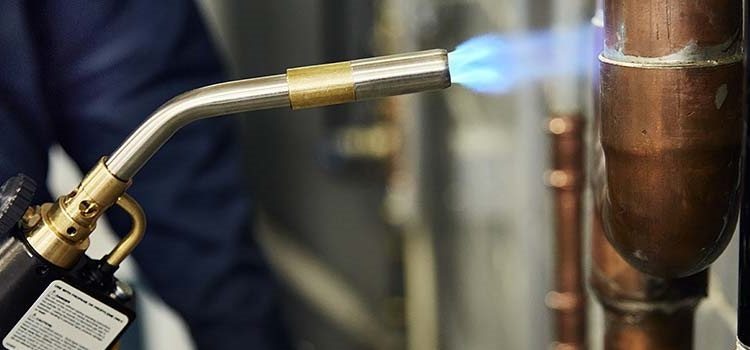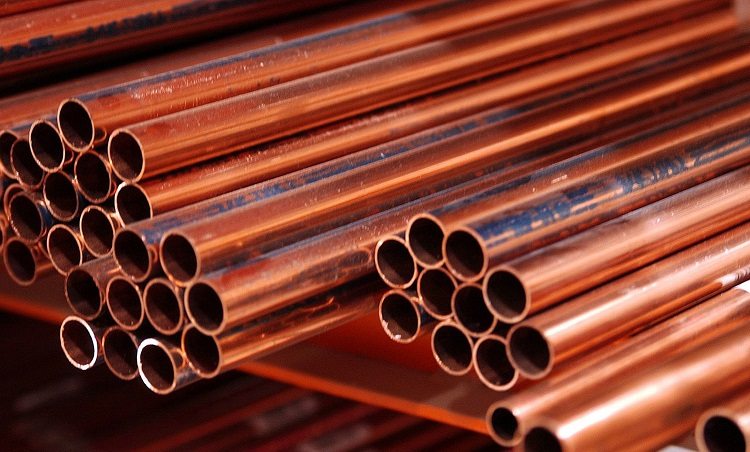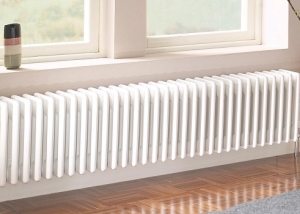Among the varieties of pipes designed for heating, copper products occupy a dominant position. Copper pipes surpass analogues from other types of metal and plastic in all respects. The only reason copper pipes are not in common use is their high cost. However, their advantages fully justify the cost of purchase and installation.

The quality of copper pipes allows them to be operated at high pressure and temperature, so this is the best option for a heating system
Content
The main characteristics of copper pipes for heating
Pipes for heating are made of highly purified copper. The amount of impurities in a copper alloy usually does not exceed 0.3%.
In favor of the use of heating systems from copper pipes, the following factors indicate:
- ease. Even the most thin-walled copper tubes for heating have high strength properties. Due to the ability to reduce the wall thickness of the product, copper pipes have become very light and flexible. Copper pipes can take any shape, which is very convenient for heating systems with many bends and turns;
- resistance to pressure. Copper structures can withstand tremendous pressures: up to 200 atmospheres. Despite the fact that even reinforced plastic structures are designed for pressure up to 6 atmospheres;
- resistance to high temperatures. While polypropylene products begin to deform at 95-100 degrees, copper pipes can easily withstand temperatures up to 300 degrees. This is especially important for single-pipe heating systems, in which the temperature of the first radiator may differ from the temperature of the latter by 70-80 degrees. This means that in the initial section of the system, the temperature of the coolant can reach 150 degrees;
- corrosion resistance. Constant contact with water does not cause rust on copper. On the walls of the pipes no deposits are formed that impede the passage of liquid due to the absolute smoothness of the material;
- frost resistance. When freezing the system or its individual sections, copper does not lose its ductility. Copper piping can work continuously after 4 freezing cycles.

Copper pipes have a smooth surface inside, and this is important for the smooth movement of the coolant
When arranging a heating system with copper pipes, it is worth remembering that these products are incompatible with aluminum radiators. The same rule applies to water pipes made of copper: the simultaneous use of aluminum plumbing is unacceptable.
How to paint copper pipes?
Copper products do not corrode, but patina may form on their surface over time. In order to avoid this effect, copper pipes can be painted. Those who do not want to lose their natural noble shade of copper can choose a special heat-resistant varnish.
Paint and varnish will protect the copper structure from mechanical damage, and will allow for a long time to maintain excellent aesthetic qualities of the pipes. The painted pipeline will create a more harmonious combination with the rest of the interior.
Helpful advice! Polymeric shells for pipes can also be used as thermal insulation and protection against stray currents.There are both separate covers for different pipe diameters and ready-made protected structures on sale.
Paints and varnishes that are not yellowing and do not exfoliate under the influence of high temperatures are suitable for painting heating pipes. Of the paints that are suitable for this description, one can distinguish alkyd enamels, paints on an acrylic or water-dispersed basis. Oil paints are not recommended to be used, as they lose their resistance and darken strongly with increasing temperature.
Of the materials that provide transparency to the layer, you can choose VL-15 varnish or epoxy varnish. Ethinole varnish mixed with finely divided aluminum powder is also used.
Before applying a layer of paint or varnish, the surface of the pipe is recommended to be primed. The primer of the pipe also requires preparatory measures: if the pipe is painted again, the previous layer is removed if possible. The surface of the pipe must be washed and thoroughly dried. The primer is applied in a thin layer, it is especially convenient to do this with a flat brush.
When painting the pipe, you should rely on the fact that copper will not absorb paint. Therefore, varnish or enamel must be shaded on a separate surface before application. To simplify the work, you can use paints and varnishes in the form of aerosols. Paints or varnishes for copper heating pipes are best applied in two layers. In this case, the first layer should completely dry, it will take from 6 to 8 hours.
Methods of connecting copper pipes
On the question of how to connect a design of copper pipes, the decisive factor will be the experience of the one who will produce installation work. There are three main methods for joining copper pipes: capillary brazing, high temperature brazing, and plug-in fitting.
Copper pipe welding. Capillary brazing gives an excellent effect in which the molten solder, undergoing adhesion, fills the weld. Such a connection has a high degree of reliability. The technical side of this work does not contain any particular difficulties: copper pipe welding You can do it yourself.
The result of the welded joint is largely dependent on the quality of the selected solder. The most commonly used standard solder is also suitable for brazing or tinplate. Such solder is suitable only for heating systems, for water supply with the supply of drinking water, its use is prohibited. For welded joints with fittings there are soft solders that require prior application of flux. Copper-phosphorus solders do not require flux.
Before welding the pipe, the surface must be cleaned of dirt, dust or grease.
Helpful advice! Do not use tools containing abrasive particles to clean the end of the pipe. A diamond mesh or sandpaper will not work for these purposes. It is better to use brushes or sponges of medium hardness.
A stripped joint is heated evenly with a blowtorch or gas burner. You can check if the pipe wall has reached the optimum temperature using a solder bar. If it begins to melt when you touch the surface of the pipe, then you can start welding.
After the solder is completely filled, the gap between the structural parts must not be subjected to mechanical stress until it is completely cooled. Next, the remains of the flux and solder are removed with a soft cloth. After completion of all welding operations, the copper system must be washed with hot water.

Welding is a common method for connecting copper pipes, but if you want to make the transition from copper to another type of pipe, you need to use a press fitting
Collet connections of copper pipes. Such connections are made using compression (crimp) fittings.Installation work in this case requires certain skills and a high degree of attention. During operation, it is necessary to monitor the cleanliness of the thread of the fitting and the pipe sections involved in the connection.
Crimping the copper pipe with fitting must be done very carefully. The lack of force in the connection will lead to insufficient sealing of the joint. And with a little more effort than required, you can break the edge of the nut.
In addition to collet (compression) fittings, threaded fittings, solder fittings (with tin as solder), and press fittings are available for connecting copper pipes.
The high cost that distinguishes copper pipes for heating from products made from other materials has become their advantage rather than disadvantage. Copper pipes can be safely attributed to premium products. The copper pipeline is an excellent choice for those who are not used to saving on their own comfort.







